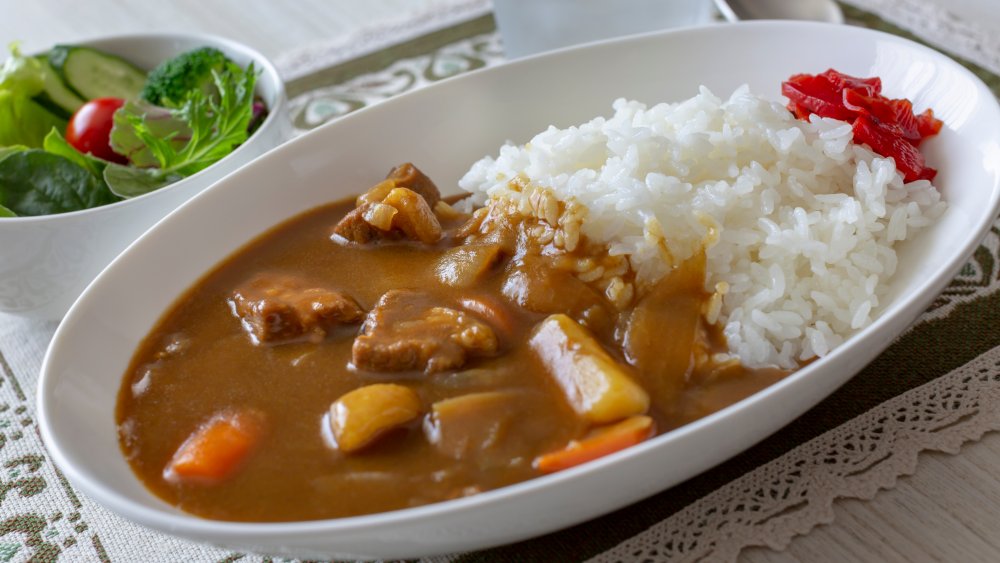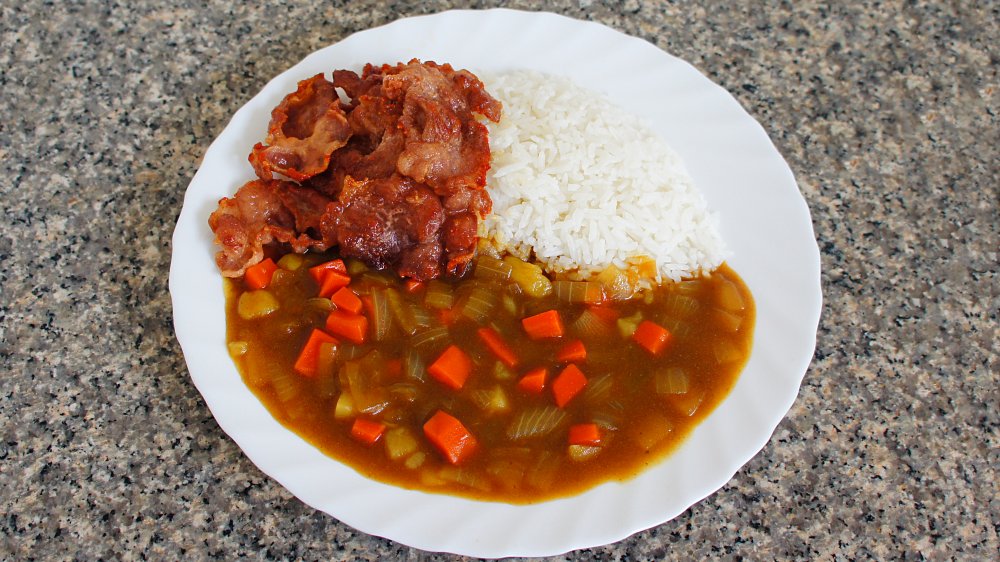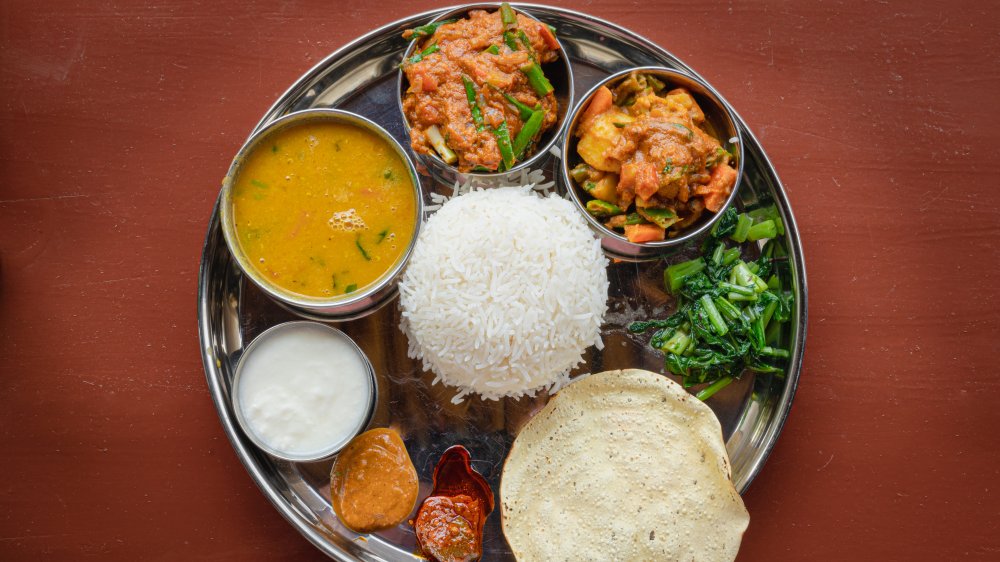The Real Difference Between Japanese Curry And Indian Curry
If you tell someone you're having curry for dinner, they might give you a curious glance, because curry can mean several different things. It matters whether you're talking about Indian curry or Japanese curry, because it turns out that the two are quite different. You don't want to confuse your dinner guests, after all.
It's the word curry that makes things so confusing. Curry originated from the Tamil word kari, which means sauce or spiced dish (via Passionate About Food), but when British colonizers went to India, they brought those saucy, spiced dishes back to Britain in the form of a new invention: curry powder. Curry powder is a fairly standardized spice blend that removed much of the nuance from those Indian dishes it inspired, but that made it easier for home cooks to try these new flavors (via Japan Guide).
When was Japanese curry invented?
British curry powder is an Anglo approximation of the saucy, spiced dishes of India and Sri Lanka, and it's that British curry powder that inspired the invention of Japanese curry.
British-style curry powder was introduced to Japan sometime between 1868 and 1912, during Japan's Meiji period, when a new Emperor opened the borders to trade after centuries of isolationism, and people were excited to try new types of Western food (via The Takeout).
Curry powder was one of these new imports, and kare raisu, or curry rice, was invented. The Japanese altered the British curry recipe to their tastes, making it sweeter, thicker, and less spicy than the Indian-inspired curry powder.
What's the difference between Indian, American, and Japanese curry?
These days, Indian curry in America and Britain usually refers to those dishes that are saucy and made with spices like cumin, coriander, and turmeric, while curry in India is a term usually only found on English-language recipe menus to denote a dish made with a wet sauce or gravy.
Japanese curry, on the other hand, is usually a stew made with a sauce made from curry powder or roux (you can often find dry Japanese curry powder or pre-made curry sauce pouches or cubes at Japanese grocery stores), that includes carrots, potatoes, onions, and meat (usually either pork or beef). It's sometimes made with crispy pork katsu and no vegetables, and is almost always served with rice.
They may share a name, but as you can see, all of these curries have their own unique history.


